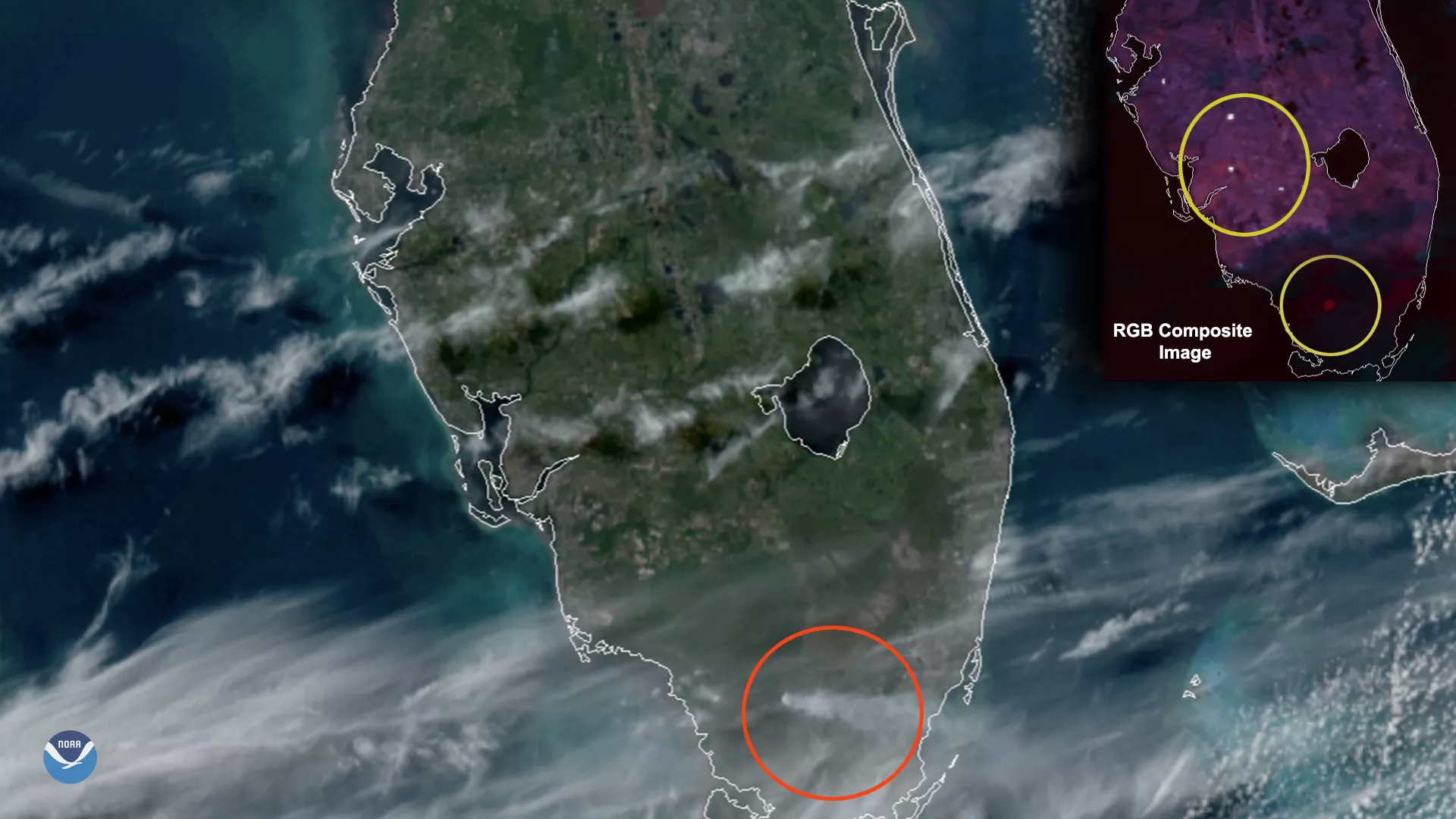
From their first spark to their dying embers, many wildfires can be seen and monitored from space by NOAA’s satellites... and sometimes our satellites see things we don’t expect.
On May 7, 2020, GOES-East spied a wildfire burning in the Everglades of South Florida, using both its GeoColor product and its Fire Temperature Multispectral RBG Composite product. With the GeoColor product, the smoke plume (red circle) from the fire is being wafted east-southeastward by surface winds, as high cirrus clouds push northeastward across the southern tip of Florida. In the Fire Temperature product (inset), there is a pale red dot showing up in the Everglades which is the heat signature from the fire being detected by GOES-East from 22,300 miles up.
Additionally, an interesting thing occurred alongside the fires— visual artifacts from area solar installations showed up on the satellite imagery and satellite analysts say that is due to specular reflection from solar power plants in South Florida. In other words, sunlight is bouncing off of the glass-plated solar panels, similar to sunglint , and show up especially well on satellite due to their particular angle in relation to the high sun angle during this time of year.
The GOES-East geostationary satellite, also known as GOES-16, keeps watch over most of North America, including the continental United States and Mexico, as well as Central and South America, the Caribbean, and the Atlantic Ocean to the west coast of Africa. The satellite's high-resolution imagery provides optimal viewing of severe weather events, including thunderstorms, tropical storms, and hurricanes-- and now, even solar panels.
